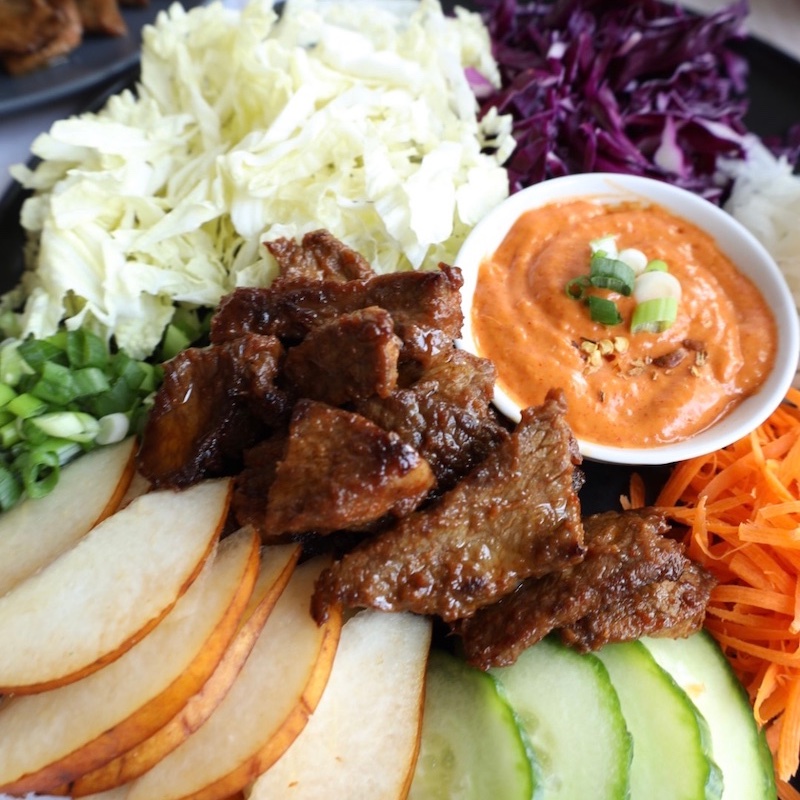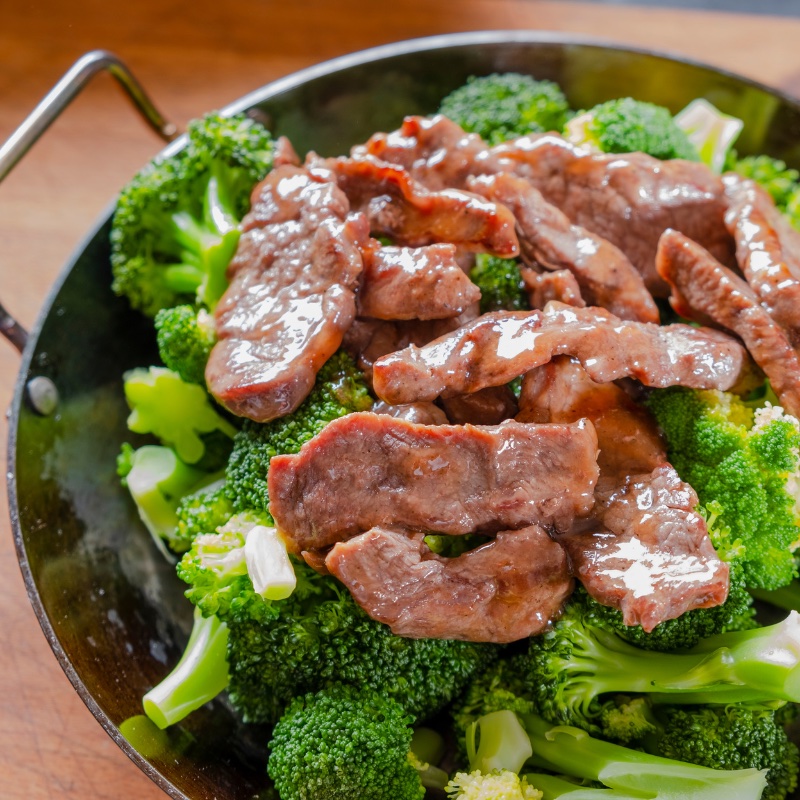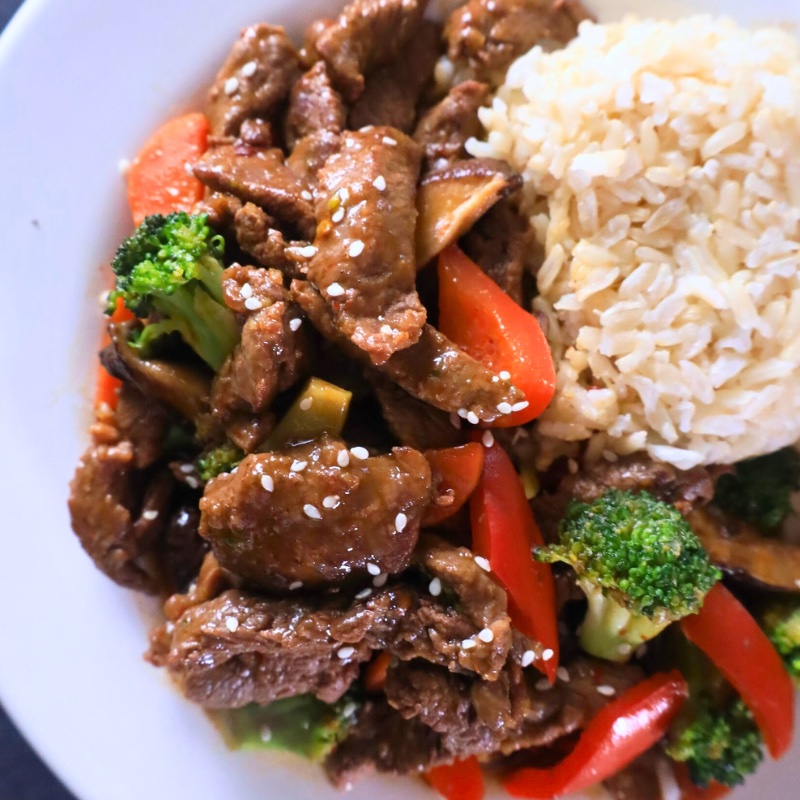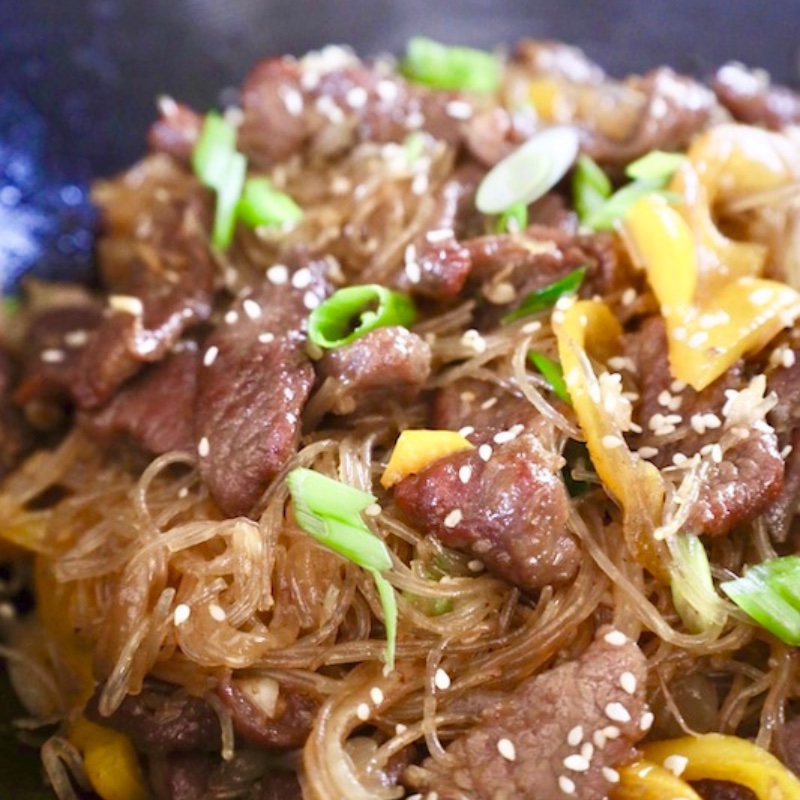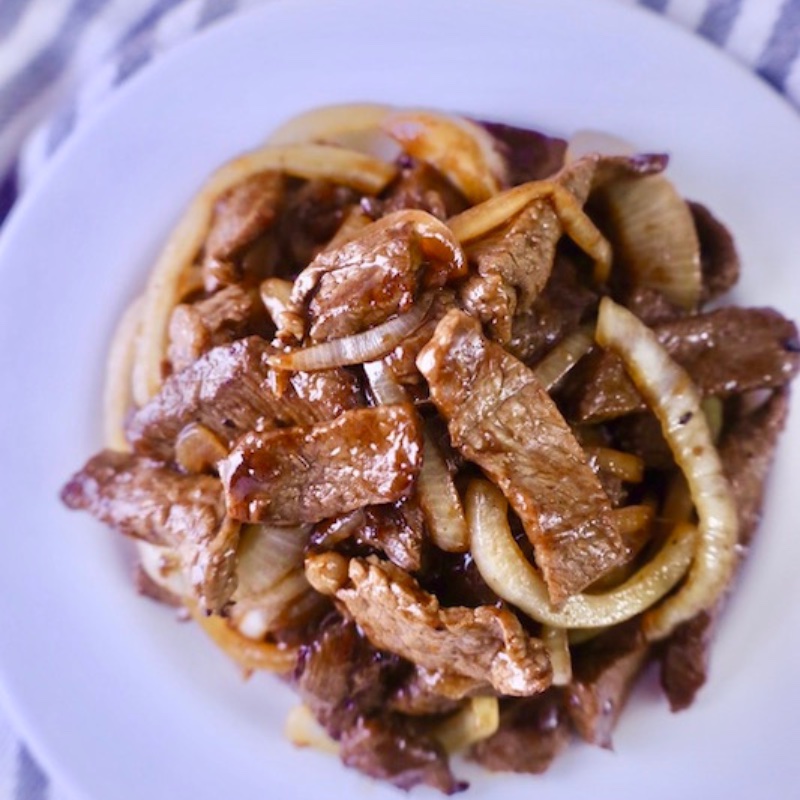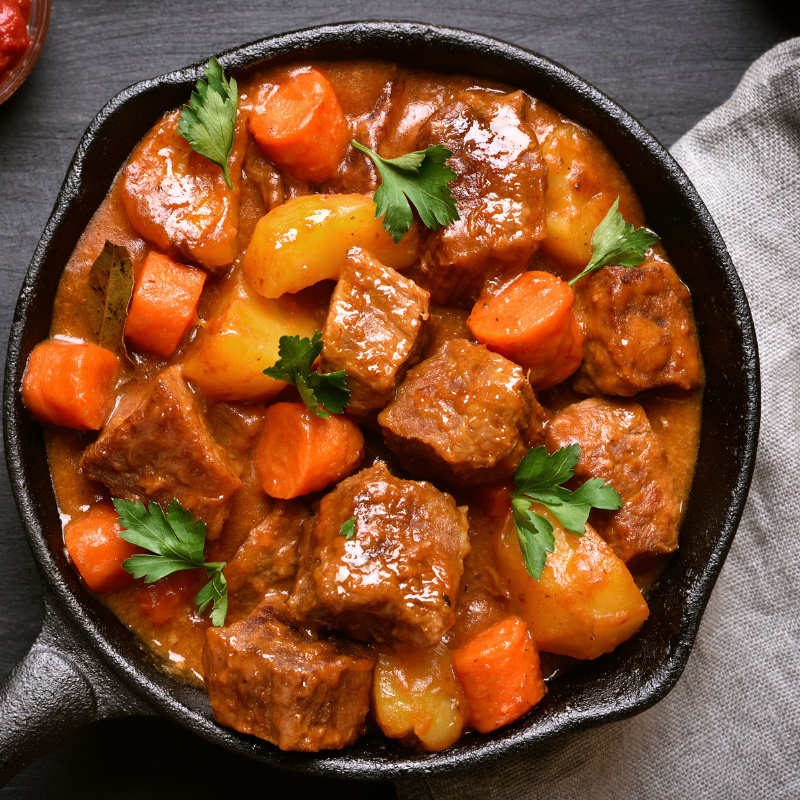Korean Beef Bulgogi
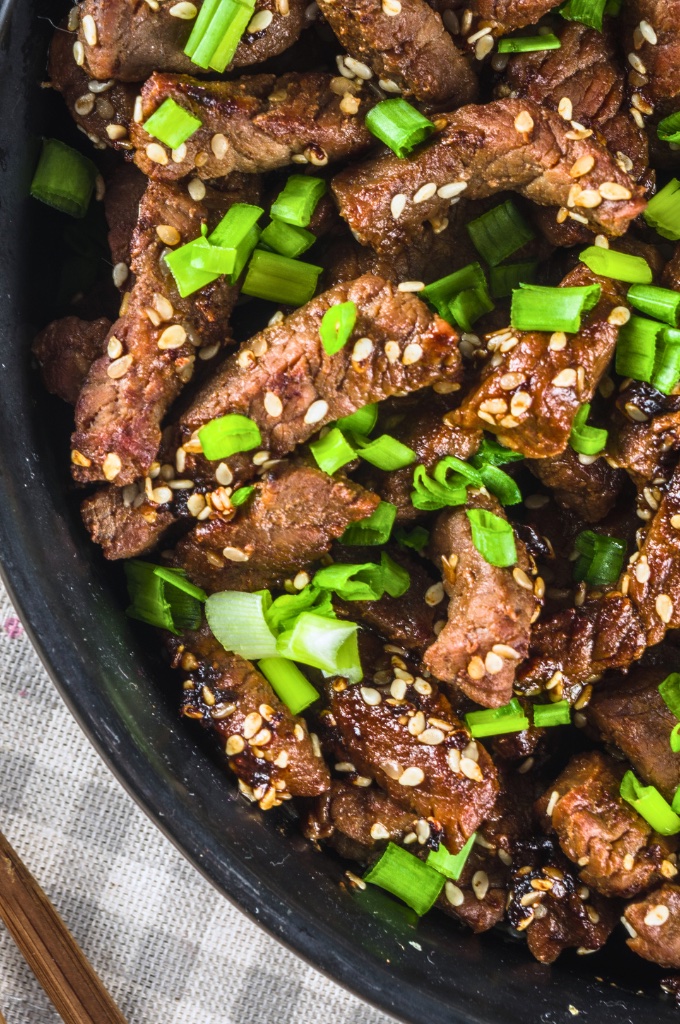
Korean Beef Bulgogi is a classic Korean dish made with thinly sliced beef marinated in a mixture of soy sauce, sugar, sesame oil, garlic, and other flavorful ingredients. The marinated beef is then grilled or stir-fried until tender. It’s often served with rice and side dishes, making it a delicious and satisfying meal. Bulgogi is known for its sweet and savory taste, and it’s a popular choice for Korean BBQ.
.
.
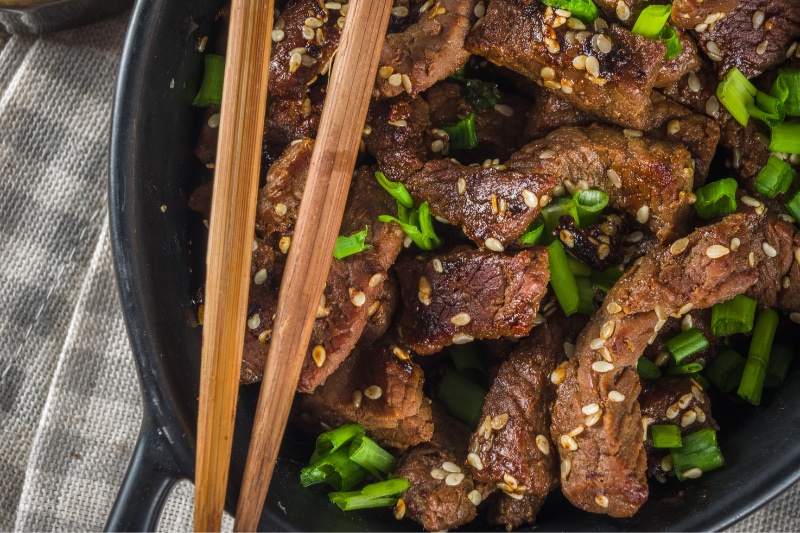
.
WHY ADD PEAR IN KOREAN BEEF BULGOGI?
.
The Role of Shredded Pear in Korean Beef Bulgogi Marinade
Enhancing Flavor
Shredded pear is a traditional ingredient in Korean Beef Bulgogi marinades that plays a vital role in enhancing the overall flavor of the dish. Pears, especially Korean pears, are naturally sweet and juicy, which helps to balance the savory and salty flavors of soy sauce and garlic in the marinade. This sweetness is subtle, providing a natural depth to the taste without overpowering the other ingredients.
Tenderizing the Meat
One of the main reasons shredded pear is used in the marinade is its tenderizing properties. Pears contain natural enzymes, such as calpain and bromelain, which help to break down the proteins in the beef. This process results in a more tender and succulent texture, making the beef easier to bite into and enjoy.
Adding Moisture
The juiciness of shredded pear also contributes to the marinade by adding moisture to the beef. This ensures that the meat remains juicy and flavorful throughout the grilling or stir-frying process. The added moisture helps to prevent the beef from drying out, maintaining its delicious taste and texture.
Traditional Authenticity
Incorporating shredded pear into the marinade is a nod to traditional Korean cooking methods, which have been passed down through generations. Using pears is a part of preserving the authenticity of the dish, connecting it to its cultural roots, and offering a genuine taste experience.
By including shredded pear in the marinade, Korean Beef Bulgogi achieves a harmonious blend of flavors and textures that make it a beloved dish in Korean cuisine. Check out my Beef Bulgogi Salad recipe.
Alternative for Shredded Pear in the Marinade
If Korean pears are unavailable or you are seeking an alternative, there are several options that can still impart similar sweetness and tenderizing qualities:
1. Shredded Apple
Use a sweet, juicy apple variety like Fuji or Gala. Provides a similar level of sweetness and contains natural enzymes that help tenderize the meat.
2. Pineapple Juice
Incorporate a small amount of fresh pineapple juice into the marinade. Pineapple is rich in bromelain, an enzyme that effectively tenderizes meat.
3. Kiwi
Use a small amount of mashed kiwi, as it has strong tenderizing properties. Kiwi contains actinidin, which breaks down protein fibers.
.
INGREDIENTS YOU NEED
.
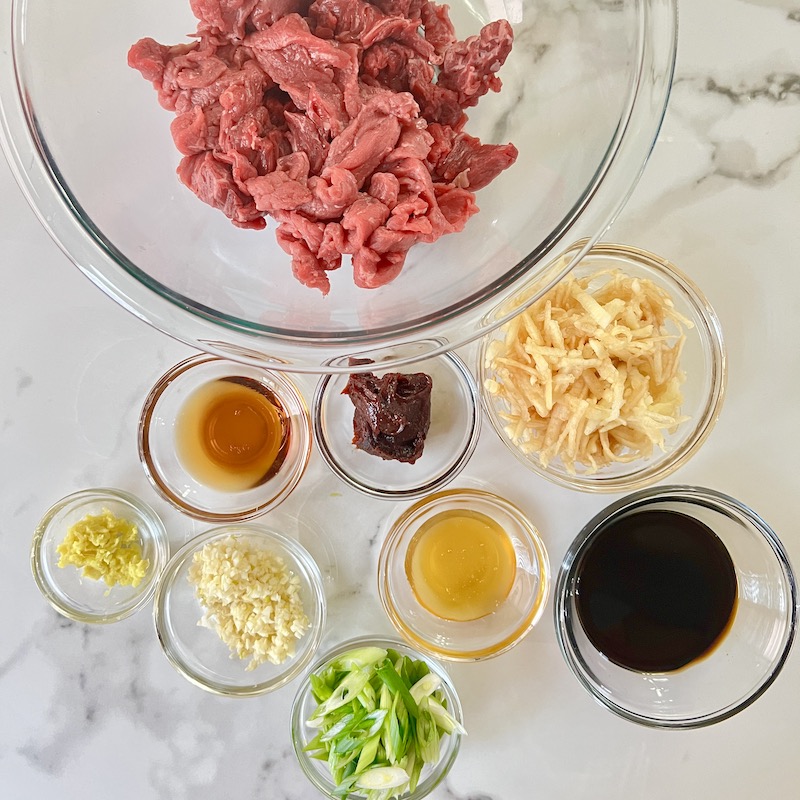
.
When preparing Korean Beef Bulgogi, each ingredient plays a crucial role in achieving the dish’s signature flavor profile and texture. Here’s a closer look at the key ingredients and their contributions:
Beef Ribeye
Selection: Ribeye is the preferred cut for Bulgogi due to its marbling, which ensures the beef remains juicy and flavorful after cooking
Preparation: Thinly slice the ribeye against the grain to ensure it cooks quickly and remains tender.
Soy Sauce
Flavor Base: Soy sauce is the primary seasoning, providing a rich umami flavor that forms the base of the marinade.
Balance: Use a high-quality soy sauce for the best results, as it greatly influences the overall taste.
Shredded Pear
Sweetness and Tenderizing: As discussed, shredded pear adds natural sweetness and helps tenderize the beef due to its enzymes.
Alternative: If Korean pears are unavailable, a sweet juicy variety like Bartlett can be used.
Sesame Oil
Aromatic Note: Sesame oil adds a nutty aroma and depth of flavor, essential for authentic Korean cuisine.
Usage: A small amount is enough, as its flavor is potent.
Minced Garlic
Savory Touch: Garlic provides a savory and slightly pungent note, enhancing the overall flavor complexity.
Preparation Tip: Freshly minced garlic is preferred over pre-minced for a more vibrant taste.
Grated Ginger
Spicy Warmth: Ginger adds a subtle warmth and spiciness, balancing the sweetness of the pear and honey.
Freshness: Use fresh ginger for the best aromatic qualities.
Honey (or Sugar)
Sweetness: Honey or sugar contributes to the sweet profile of Bulgogi, balancing the savory and spicy elements.
Choice: Honey offers a more complex sweetness, while sugar provides a straightforward sweetness.
Gochujang
Heat and Fermentation: This Korean chili paste brings a mild heat and distinctive fermented flavor, crucial for adding depth.
Adjusting Heat: Adjust the quantity based on your heat preference.
Ground Pepper to Taste
Subtle Spice: Ground pepper adds a hint of spice and enhances the other flavors without overpowering them.
Customization: Adjust to personal taste, considering the heat from gochujang.
.
BEST SIDE DISHES TO SERVE
.
Korean Beef Bulgogi is a flavorful dish that pairs well with a variety of side dishes, enhancing the dining experience with complementary textures and tastes. Here are some popular side dishes to consider:
Kimchi
A traditional Korean side dish made from fermented vegetables, usually Napa cabbage and Korean radishes, with a variety of seasonings. Spicy, tangy, and slightly sour, kimchi adds a refreshing contrast to the savory richness of bulgogi.
Steamed Rice
Simple steamed white rice is a classic accompaniment that balances the flavors and provides a neutral base. Jasmine or short-grain rice works well, absorbing the delicious juices from the bulgogi.
Korean Potato Salad
A creamy potato salad featuring hard-boiled eggs, cucumbers, and sometimes apples or carrots. Slightly sweet and tangy, offering a cooling counterpoint to the spicy elements of the meal.
Japchae
Stir-fried glass noodles with vegetables and sometimes beef or mushrooms. Savory and slightly sweet, with a chewy texture that complements the tenderness of the bulgogi.
Ssam (Lettuce Wraps)
Fresh lettuce leaves are used to wrap pieces of bulgogi, along with rice and ssamjang (a dipping sauce). This adds a fresh, crisp element to the meal and allows for customizable bites.
.
HOW TO STORE KOREAN BEEF BULGOGI
.
Method: Transfer any leftover bulgogi into an airtight container.
Duration: Store in the refrigerator for up to 3-4 days.
Reheating: Gently reheat in a skillet over low heat, adding a splash of water if needed to maintain moisture.
Method: Place the bulgogi in a freezer-safe container or heavy-duty freezer bag, removing as much air as possible.
Duration: Freeze for up to 2-3 months.
Thawing and Reheating: Thaw in the refrigerator overnight and reheat in a skillet, as mentioned above.
.
RECOMMENDED RECIPES
.
.
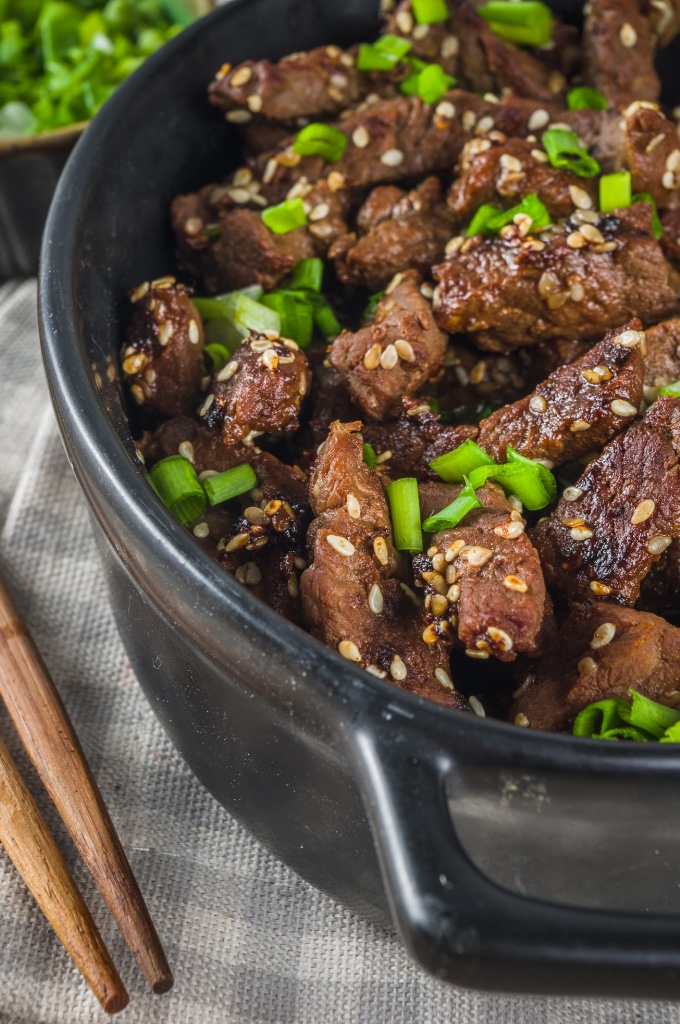
.
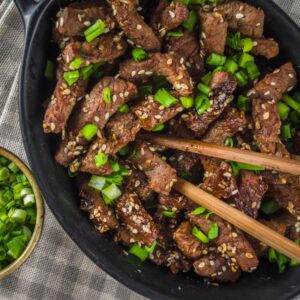
Korean Beef Bulgogi
Equipment
- Skillet
- Tongs
- Box Shredder
- Bowls
- Measuring cups
- Measuring spoons
- knife
- cutting board
Ingredients
- 1 pound tender cut of beef like ribeye
- 1/4 cup soy sauce
- 1 cup shredded pear
- 1 tablespoon sesame oil
- 4 garlic cloves, minced
- 1 tablespoon grated fresh ginger
- 1 tablespoon honey
- 1 tablespoon Gochujang
- ground pepper to taste
Instructions
- SLICE THE BEEF: Carefully slice the beef ribeye into thin strips, ensuring you cut against the grain for maximum tenderness.
- PREPARE THE MARINADE: In a mixing bowl, combine the following ingredients to create the marinade: soy sauce, shredded pear, sesame oil, minced garlic, grated ginger, honey, gochujang, and ground pepper.
- MARINATE THE BEEF: Place the sliced beef into a large bowl and pour the marinade over it. Ensure all pieces are evenly coated by mixing thoroughly.
- MARINATION TIME: Cover the bowl and allow the beef to marinate in the refrigerator for at least one hour. For enhanced flavor, marinate overnight.
- COOK THE BEEF: Heat a skillet over medium-high heat and add a small amount of oil. Once the oil is hot, add the marinated beef in batches to avoid overcrowding. Sear the beef until it turns golden brown.
- FINISH AND SERVE: Once the beef is cooked, add sliced green onions to the skillet and stir to combine. Serve the bulgogi with steamed rice and a side of steamed vegetables for a complete meal.
Video
.
GET A WEEK FREE OF MEAL-PREPPING RECIPES WITH A GROCERY LIST
.
.

